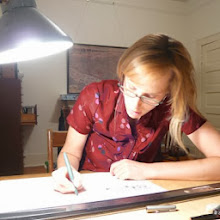 I took a break from "book-binding my life away" to attend a lecture at the National Building Museum, Drayton Hall: Palladio in America last night with my friend, MB. (And I witnessed the President's 20+ vehicle motorcade on my way down.) MB and I were neighbors and friends in our beloved Savannah and have both recently relocated to Washington DC and enjoy exploring our new city together. The lecture was a unique opportunity to experience the merging of our new and familiar loved places, the Lowcountry and our Nation's Capital. For me, also the merging of my favorite historic house, Drayton Hall, a plantation on the Ashley River near Charleston which I enjoyed visiting numerous times while living in nearby Savannah - and my favorite museum, the National Building Museum. (image below)
I took a break from "book-binding my life away" to attend a lecture at the National Building Museum, Drayton Hall: Palladio in America last night with my friend, MB. (And I witnessed the President's 20+ vehicle motorcade on my way down.) MB and I were neighbors and friends in our beloved Savannah and have both recently relocated to Washington DC and enjoy exploring our new city together. The lecture was a unique opportunity to experience the merging of our new and familiar loved places, the Lowcountry and our Nation's Capital. For me, also the merging of my favorite historic house, Drayton Hall, a plantation on the Ashley River near Charleston which I enjoyed visiting numerous times while living in nearby Savannah - and my favorite museum, the National Building Museum. (image below)  Executive Director George McDaniel described Drayton Hall as a time line, not a time capsule. This is precisely why I am drawn to the house. It is preserved, not restored; open as a protected ruin reflective of its 275-year lifespan, not a closed, secure re-creation of a certain period.
Executive Director George McDaniel described Drayton Hall as a time line, not a time capsule. This is precisely why I am drawn to the house. It is preserved, not restored; open as a protected ruin reflective of its 275-year lifespan, not a closed, secure re-creation of a certain period. 
Touring the house five times has only led me to scratch the surface of Drayton Hall's history and mystery. I learned, among a myriad of interesting ideas and connections, that found within John Drayton's books was his detailed account of the furnishings of the White House which he visited while in Washington DC! Also of noteworthy discussion was the watercolor rendering, recently gifted to the house, of Pierre Eugene DuSimitier who painted Drayton Hall in the 1700s, along with plantation architecture in Jamaica and a few other notable houses in the new world. The painting shows a semi-circular colonnade joining the main house and flanking outbuildings (now gone) which is the basis for recent archaeological digs. I appreciated the archaeological approach by Director of Preservation Carter Hudgins, like the clues found within the proportions of the rooms. Drayton Hall's room proportions of 1:1, 1:2 and 3:5 follow the pattern of Palladio's designs. 

The lecture is coincident with the Building Museum's phenomenal exhibit, Palladio and His Legacy: A Transatlantic Journey which exhibits the work of Italian architect Andrea Palladio in models and his own drawings and explains the repercussions in the UK and America of his aesthetic, the result of rigorous study of classical Greek and Roman architecture. Which brings us to Drayton Hall, arguably the first example of Palladianism in the newly formed United States of America. McDaniel explained the Palladian significance of Drayton Hall in the fact that no precedent had been found for the design of this house in either England or America and put forth Palladio's Villa Cornaro in the Veneto with its double portico. Palladio's books were found on John Drayton's library list. And this is just the beginning of the Architectural Detective Work...










No comments:
Post a Comment